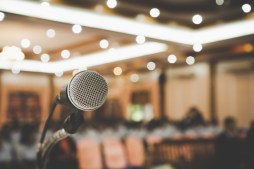A Comprehensive Guide to the Essential Materials for Your In-Home Darkroom
Creating your own in-home darkroom can be an exciting and fulfilling endeavor for any photography enthusiast. Whether you’re a beginner or an experienced photographer, having a dedicated space to develop and print your own photographs brings a whole new level of creativity and control to your craft. To get started, it’s important to have the right materials in place. In this comprehensive guide, we will explore the essential materials you need for your in-home darkroom.
Darkroom Setup
Before diving into the specific materials you’ll need, let’s first discuss the setup of your in-home darkroom. Ideally, you’ll want a room with minimal light leaks and good ventilation. A spare bathroom or a basement can work well for this purpose. Consider installing blackout curtains or using weatherstripping tape to seal off any windows or doors that might let light in.

Basic Equipment
Enlarger: The heart of any darkroom is the enlarger, which is used to project your negatives onto photo paper for printing. Look for an enlarger that is compatible with the film format you shoot with (35mm, medium format, etc.) and has adjustable focus and aperture settings.
Safelight: A safelight emits light in a specific spectrum that won’t affect light-sensitive materials like photo paper or film negatives. Choose a safelight with an appropriate color filter based on the type of paper you’ll be using (e.g., red/orange filter for black and white prints).
Timer: Accurate timing is crucial when developing and printing photographs. Invest in a reliable timer that allows you to set precise exposure times.
Developing Trays: These are used for holding chemicals during the development process. It’s recommended to have at least three trays – one each for developer, stop bath, and fixer solutions.
Chemicals and Consumables
Developer: The developer is a crucial chemical that brings out the latent image on your photo paper. There are various types of developers available, each producing different results. Choose one that suits your preferred photographic style.
Stop Bath: After developing, stop bath halts the development process and prevents overexposure. It helps preserve the image and extends the life of fixer solution.
Fixer: Fixer removes any remaining light-sensitive materials from your prints, making them stable and archival. Look for a fixer solution that’s easy to mix and has a long shelf life.
Photo Paper: There are different types of photo paper available, including glossy, matte, and fiber-based options. Experiment with different papers to find the one that best complements your photographic style.
Negative Sleeves/Storage: Properly storing your negatives is essential for their longevity. Invest in archival-quality negative sleeves or storage pages to protect them from damage.
Additional Tools and Accessories
Thermometer: Maintaining consistent temperatures is important during the development process. A darkroom thermometer will help you achieve accurate temperature control for chemicals and water baths.
Tongs/Squeegees: These tools are used to handle prints during processing without damaging them or leaving fingerprints.
Film Developing Tank/Reel: If you plan on developing your own film at home, a film developing tank with a reel is essential for loading and agitating the film during development.
Drying Rack: Once you’ve finished printing or developing, having a dedicated drying rack will help ensure your prints dry evenly without any streaks or marks.
Conclusion:
Setting up an in-home darkroom can be an incredibly rewarding experience for photographers who want full creative control over their images’ development process. By investing in these essential materials – from basic equipment to chemicals and consumables – you’ll be well on your way to creating stunning prints from the comfort of your own home. Remember, the key is to practice, experiment, and enjoy the journey of honing your darkroom skills. Happy printing.
This text was generated using a large language model, and select text has been reviewed and moderated for purposes such as readability.


